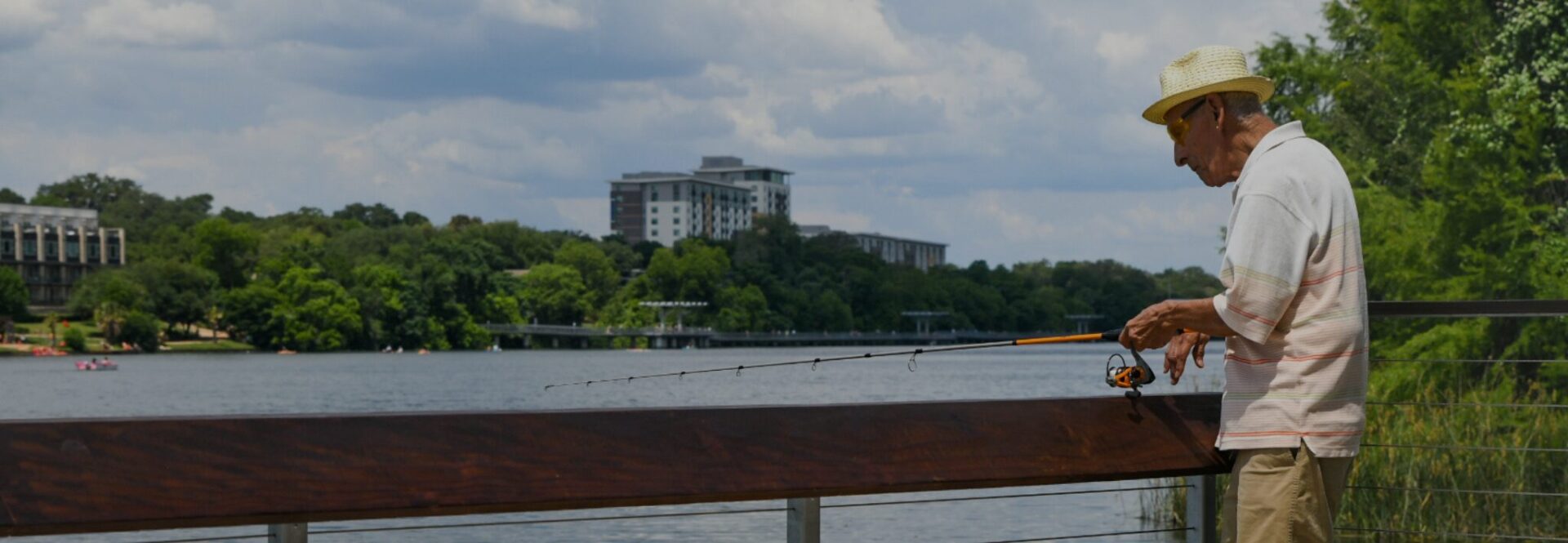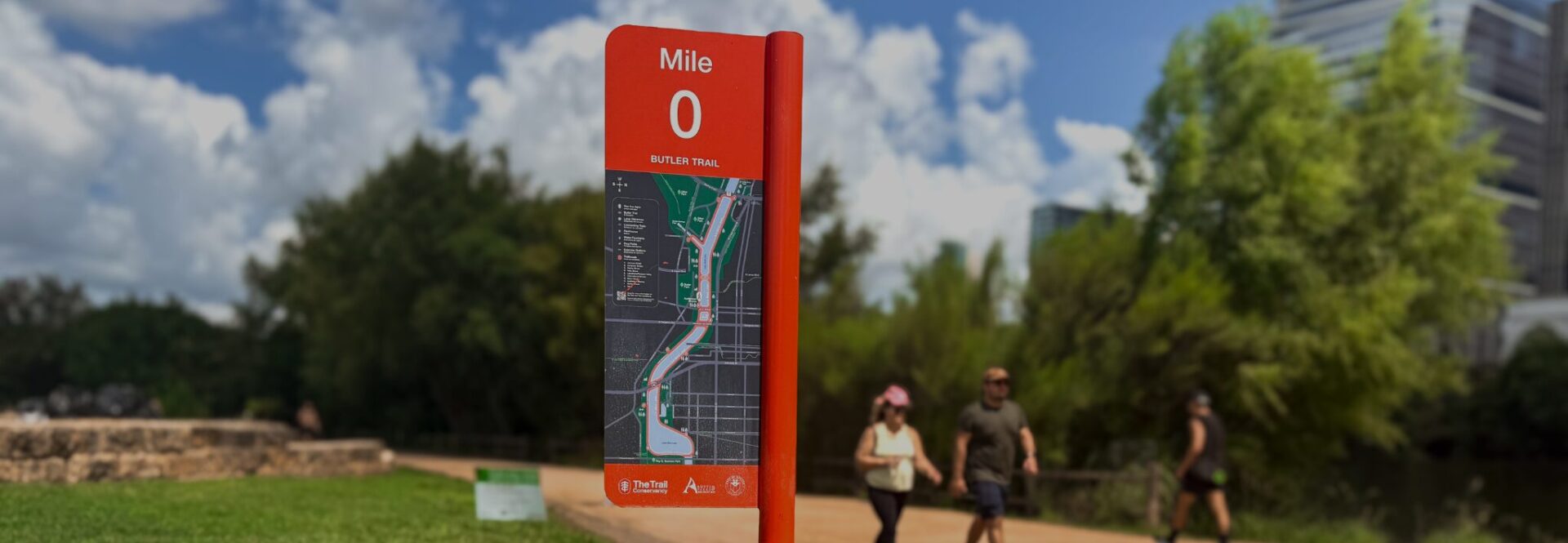In partnership with the Lady Bird Johnson Wildflower Center, The Trail Conservancy hosted four temporary sculptural art installations on the Butler Trail as part of Fortlandia 2022-23. Fortlandia is a collection of forts designed by architects, designers, and artists, that connect people of all ages to the environment by evoking a sense of childhood play and wonder.
Fortlandia Projects 2022-23
territories
By designer Mark Odom Studio.
Project Team: Geoffrey Ford, Mari Michael Glassell, Alfredo Tiznado
Builder: Citadel Development Services
Fabricator: Makehaus
Graffiti: Sloke One
Childhood play is so often focused on discovery— discovery of place, of material, and of potential creations. This type of discovery can be found at any scale, alone or with friends, and ultimately fosters imagination and interaction, even with strangers. Our fort aims to tap into this type of play by establishing a series of strategic shelters, or territories, which can be continually defined and redefined by the interaction of its occupants. Derived from the game of pick-up sticks, this fort establishes a series of shelters, or territories, which can be continually redefined by its occupants. The territories are assembled with materials that reflect “discovered” objects; those that can be reused in a variety of ways. Layering reclaimed 36” diameter drainage pipe, and cargo net over custom steel frames, a dynamic and unexpected environment was created – one that offers opportunities for people of all ages to discover each territory in several exciting ways.
Wisteria
Design by architect Shelley McDavid
Fabricated by Curate Custom Homes & Brian Chilton Design
Wisteria is reminiscent of the abstract qualities of unexpected forts found in interstitial spaces where nature meets the built environment. Like the branchy tunnel at ground level between azalea bushes and a fence line or the circular void around a gnarled trunk found within a freestanding wisteria bush, Wisteria proposes a surprise destination and whimsical hideout.
Circular in shape, it is an object to be experienced from the exterior consistently and from all sides. Upon entering, the repetitive fence-like enclosure reveals a maze, leading from start to finish through layers of space defined by wood pickets. The experience of the lookout above is contrasted with that of the tunnel below, the former defined by sky, openness, and views out and the latter by ground, enclosure, and introspection.
Phoenix Trail
Created by Agustina Rodriguez
Phoenix Trail was a dynamic fort installation celebrating regeneration and nature’s resiliency. Inspired by the prescribed burns in the Hill Country Trails area of the Lady Bird Johnson Wildflower Center, Phoenix Trail is about rising from the ashes and starting anew.
Phoenix Trail hopes to encourage curiosity, interaction, and the enjoyment of place. The alternating colors emphasize the power of transformation and are inspired by local wildflowers, creating a moire effect as one walks through and around the fort structure. The outward faces of the fort’s wooden posts feature a rich Shou Sugi Ban finish, providing a direct link to the mythical phoenix. Each a-frame is punctuated with hanging rope, creating a rope maze that recalls a frolic through the tall grasses of a Blackland Prairie.
Creator Agustina Rodriguez is an Austin-based designer whose work explores connections between people and places through architecture and visual art. Agustina holds a Master of Architecture from the University of Texas at Austin and works independently as a visual artist and architectural designer.
star dome
Created by sculptor, designer, and builder Chris Levack
Star Dome is a large 5-pointed Lone Star, laid over a hemispheric dome. In maps, a star denotes a capital, and Star Dome becomes a visual representation of where the viewer is placed: Austin, TX, the capital of the state. The five points make contact with the ground and the negative space creates five curved triangular openings and will frame five views of the river and Trail. As we rotate through the day, the sun casts a curvaceous star pattern of shadows on the ground. The shape and frame are made of steel pipe rolled to an exact radius to fit the Star Dome pattern. The body of Star Dome is filled in with negative ash juniper boughs and branches, all running in congruent diagonal directions creating a 10-sided, 5-pointed star, as seen throughout our state.


